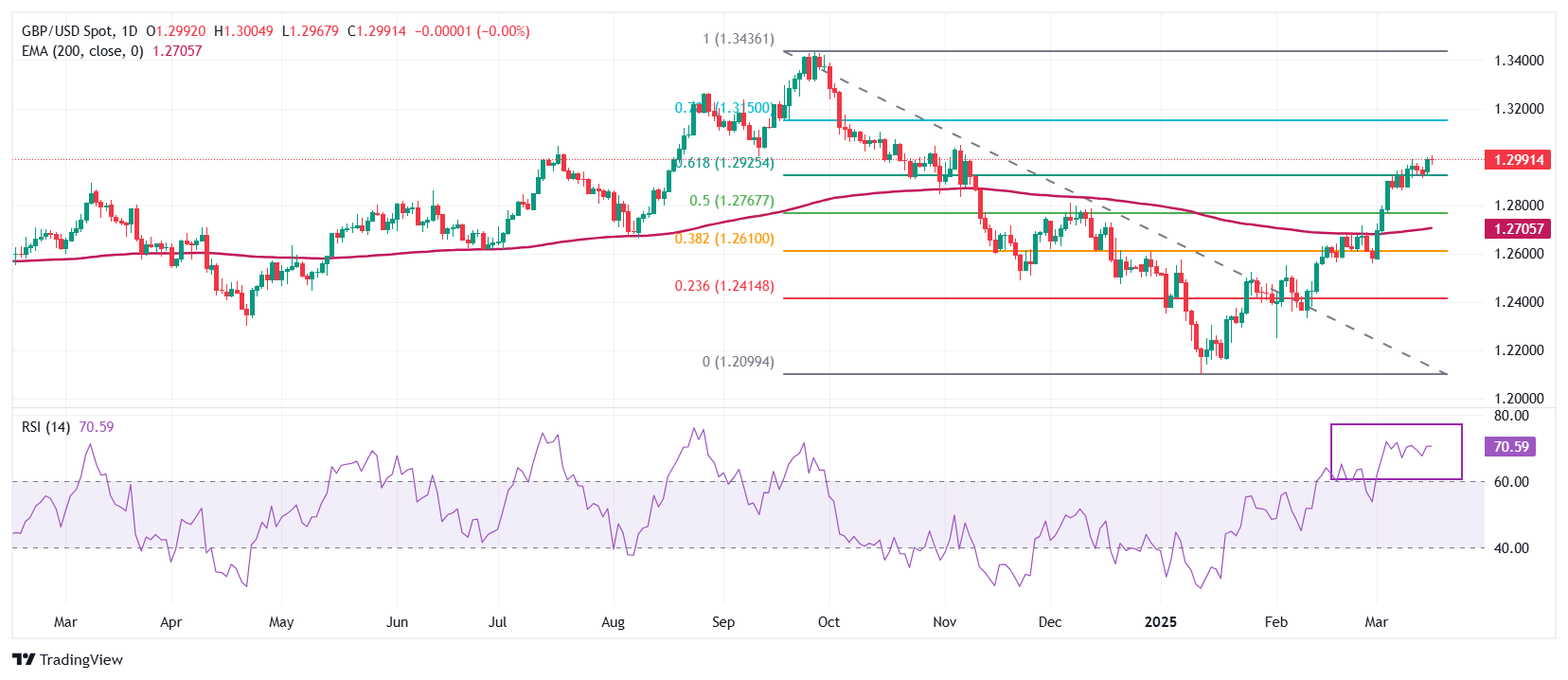- The Pound Sterling retreats from 1.3000 against the US Dollar as the DXY Index rebounds near a five-month low.
- Fed officials may signal a higher number of interest rate cuts this year.
- Both the Fed and BoE are expected to hold interest rates steady on Wednesday and Thursday, respectively.
The Pound Sterling (GBP) faces mild selling pressure near the key 1.3000 level against the US Dollar (USD) during North American trading on Tuesday. GBP/USD struggles to extend gains as the US Dollar Index (DXY) finds buying interest near a five-month low of 103.20.
The Greenback rebounds as investors turn cautious ahead of the Federal Reserve's (Fed) policy decision on Wednesday. Markets will closely watch the Fed’s dot plot, which outlines projections for interest rates in the near and long term. The central bank is widely expected to hold rates steady at 4.25%-4.50% for the second consecutive meeting.
Expectations are rising that the Fed may signal additional rate cuts this year when it concludes its March meeting. In December, policymakers projected two rate cuts in 2025. The possibility of a more dovish stance is supported by cooling inflation and weakening consumer confidence.
Recent data showed that the US core Consumer Price Index (CPI) rose 3.1% in February, the slowest pace since April 2021. Additionally, the preliminary Michigan Consumer Sentiment Index dropped sharply to 57.9 in March, well below the expected 63.1 and the previous reading of 64.7.
Daily Digest Market Movers: Pound Sterling Trades Cautiously as BoE Policy Decision Looms
- The Pound Sterling (GBP) trades cautiously against major peers as investors shift focus to the Bank of England’s (BoE) upcoming interest rate decision on Thursday. Markets widely expect the BoE to maintain borrowing rates at 4.5%, with a 7-2 voting split among policymakers.
- Monetary Policy Committee (MPC) members Catherine Mann and Swati Dhingra are anticipated to advocate for an interest rate cut. In February, both supported a larger-than-usual 50 basis point (bps) reduction, while the majority favored a more conventional 25 bps cut.
- Investors will closely monitor the BoE’s forward guidance on monetary policy and its outlook on the UK economy, particularly in light of the ongoing trade tensions sparked by US President Donald Trump’s tariff policies. Market expectations suggest the BoE could implement two additional rate cuts this year, following its February decision to halve its GDP growth forecast to 0.75%.
- On Monday, the Organisation for Economic Cooperation and Development (OECD) revised its UK economic growth forecast downward, lowering its projection from 1.7% to 1.4% due to increased global uncertainty stemming from Trump’s trade agenda.
- In addition to the BoE decision, investors will pay close attention to UK labor market data for the three months ending in January, set for release on Thursday.
Technical Analysis: Pound Sterling Holds Above 1.2900

The Pound Sterling saw mild selling pressure after reaching a fresh four-month high near the psychological level of 1.3000 against the US Dollar (USD) on Tuesday. The pair remains supported above the 61.8% Fibonacci retracement level of 1.2930, derived from the late September high to the mid-January low.
The long-term outlook remains bullish as GBP/USD continues to trade above the 200-day Exponential Moving Average (EMA), currently near 1.2700.
Momentum indicators suggest continued strength, with the 14-day Relative Strength Index (RSI) holding above 60.00, reinforcing a bullish bias.
Key support levels include the 50% Fibonacci retracement at 1.2767 and the 38.2% retracement at 1.2608. On the upside, the October 15 high of 1.3100 serves as the next major resistance level.





